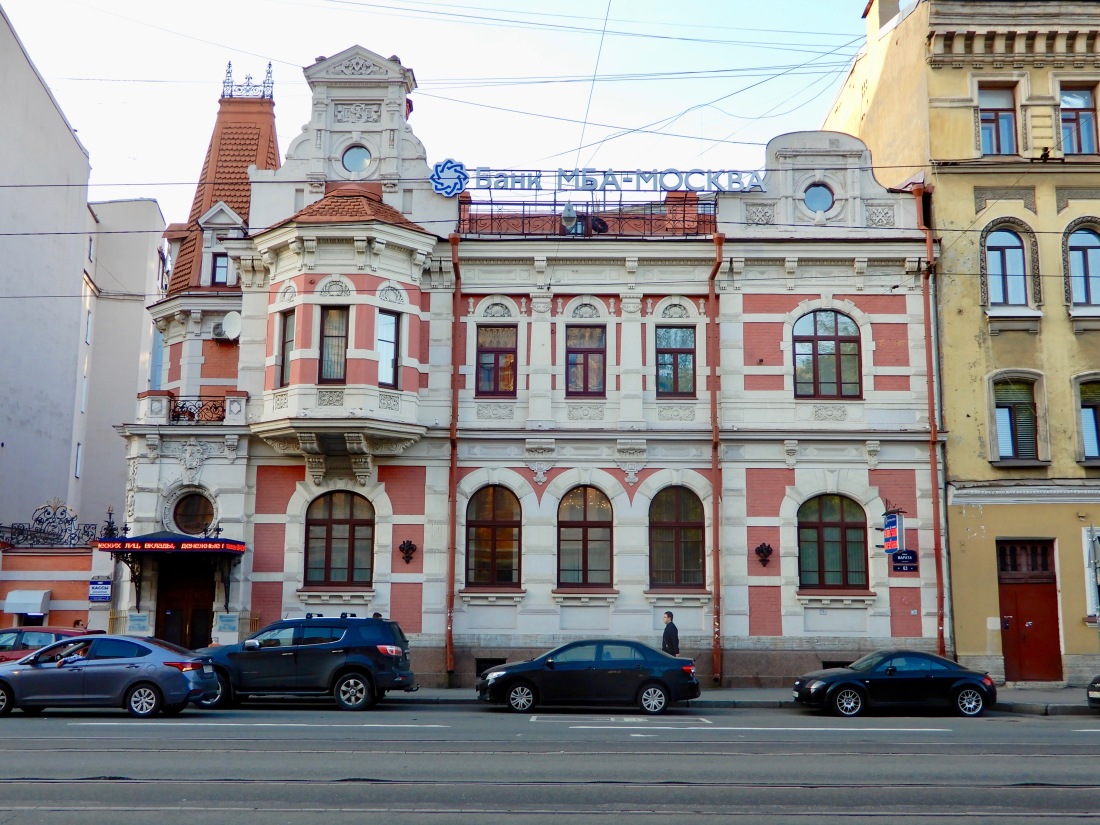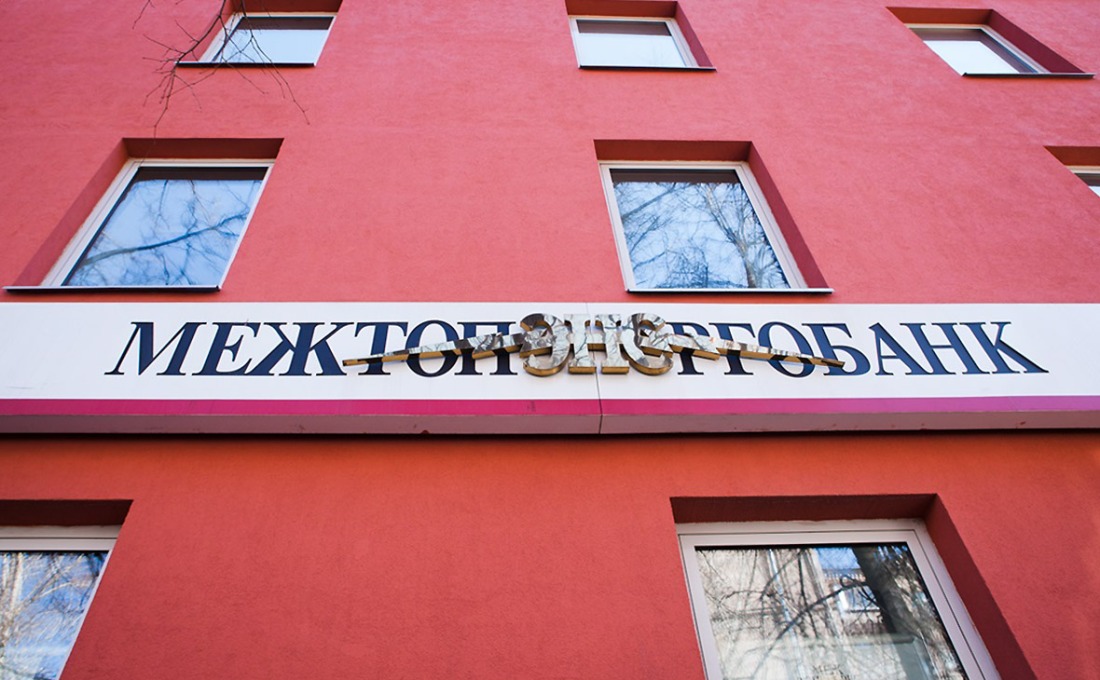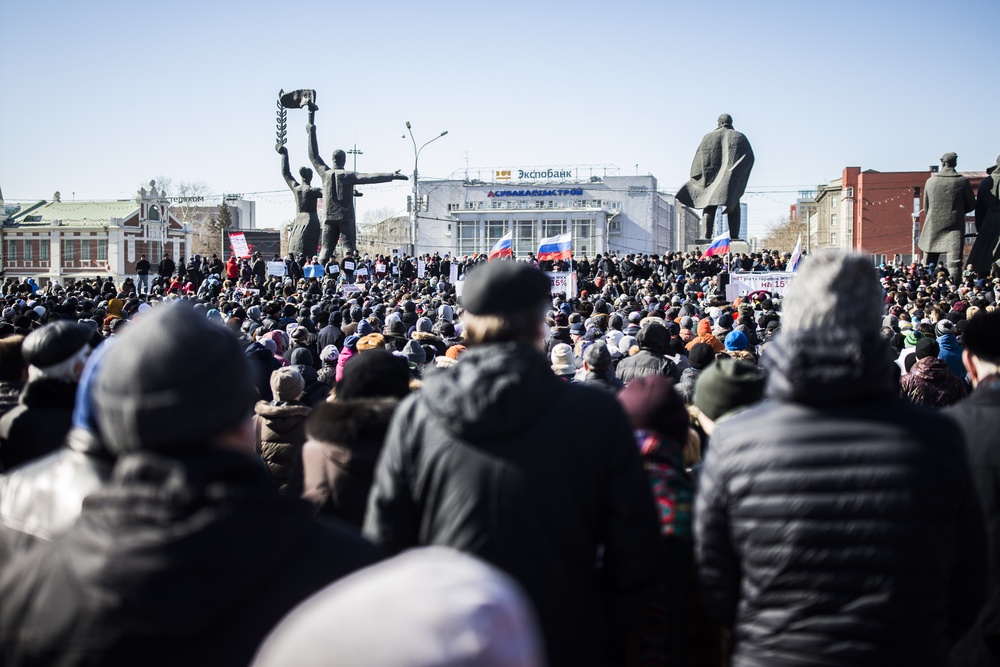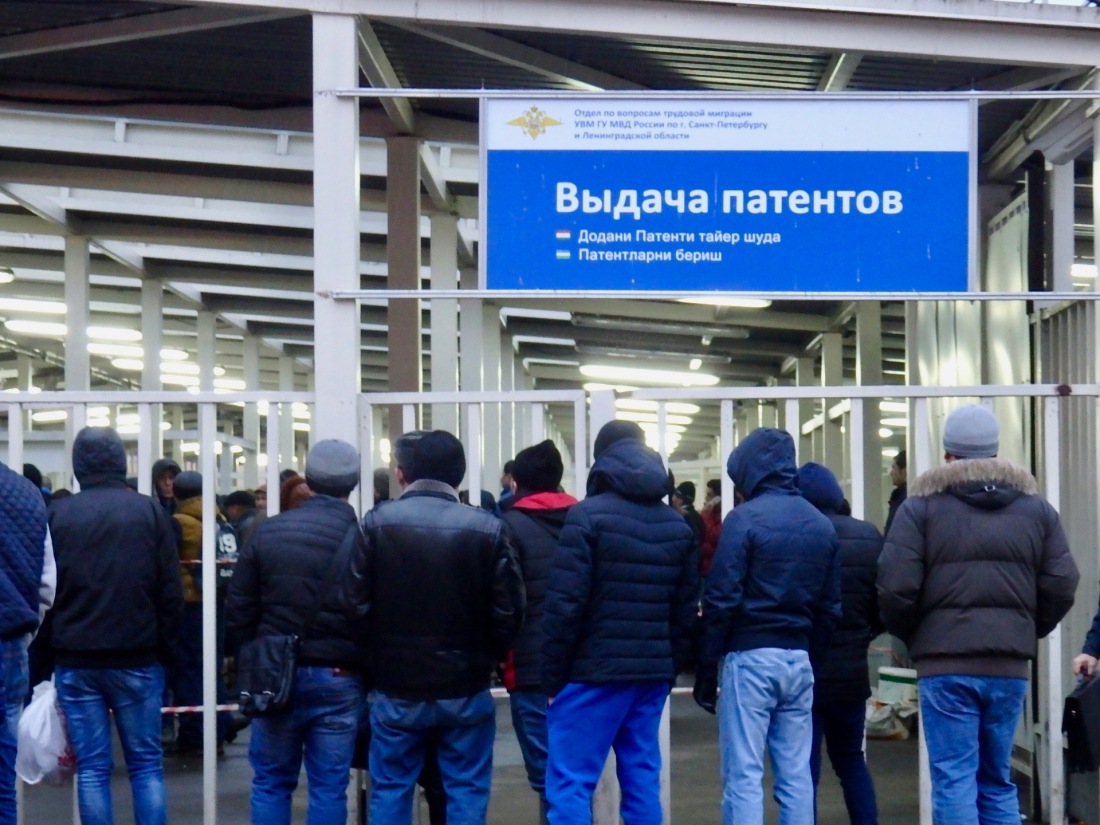 Central Asian migrant workers queuing outside the Russian Interior Ministry’s work permit application center on Red Textile Worker Street in St. Petersburg. Photo by the Russian Reader
Central Asian migrant workers queuing outside the Russian Interior Ministry’s work permit application center on Red Textile Worker Street in St. Petersburg. Photo by the Russian Reader
Should Everyone Disappear into the Shadows? What the Fee Increase for Migrant Worker Permits Entails
Yekaterina Ivashchenko
Fergana News
November 29, 2018
The license [in Russian, patent] system for foreign nationals seeking permission to work in Russia was introduced in 2015. The cost of a work permit has varied from one region to the next. In Moscow, for example, it initially cost 4,000 rubles a month. In 2016, the price rose by 5% to 4,200 rubles, and in 2018, it rose by 7% to 4,500 rubles.
It is absolutely necessary to have a work permit. Without it, a migrant worker faces up to 7,000 rubles in fines, expulsion from Russia, and a ban on entering the country for a period of three to ten years. Employers who hire employees without work permits are punishable by fines, and their operations can be suspended for up to ninety days.
Something important happened on November 21, 2018. The Moscow City Duma approved a law bill increasing the cost of a work permit in Moscow. In 2019, it will rise by 500 rubles (11%) and cost 5,000 rubles a month (approx. $75).
The next day, November 22, Moscow Mayor Sergei Sobyanin said the city’s revenues from legal migrant workers had been growing and would exceed 16 billion rubles ($241 million) by year’s end.
“By paying such a high price for permits, migrant workers have come to occupy a fair position vis-à-vis Russian nationals [rossiyane] working in Moscow, because in the past they paid nothing at all, and, of course, it was profitable to employ them, but the situation has changed today,” said the mayor.
On January 1, 2019, the cost of a license for migrant workers seeking employment in Moscow Region will increase by 450 rubles. The Moscow Region work permit, which cost 4,300 rubles ($64.60) in 2018, will cost 4,750 rubles ($71.50) per month in 2019.
Taras Yefimov, chair of the Moscow Regional Duma’s budget, finance and tax committee, said the measure would enrich the region’s coffers by around one billion rubles [approx. $15 million]. In 2018, Moscow Region made six billion rubles [approx. $90.5 million] on migrant work permits.
St. Petersburg has decided to raise the price of the work permit from 3,500 to 3,800 rubles a month. City officials noted the decision was made because foreign nationals had begun earning considerably more money.
 Filling out the forms for extending a work permit. Photo courtesy of Fmskam.ru and Fergana News
Filling out the forms for extending a work permit. Photo courtesy of Fmskam.ru and Fergana News
Wages Are Not Growing
Svetlana Salamova, director of Migranto.ru, a website for migrant workers looking for jobs and employers seeking to hire migrant workers, has not seen the real growth in the wages of migrant workers that officials have cited.
“The wages of foreign nationals who are employed on the basis of work permits has remained at the level of 29,000 rubles to 35,000 rubles [$435–$525] a month. Maybe the Moscow authorities are focused on high-profile specialists who make 168,000 rubles a month officially?” Salamova sarcastically wondered.
Salamova has noticed wage increases only among Kyrgyz nationals. After Kyrgyzstan joined the EAEU (Eurasian Economic Union), employers offered them 40,000 to 45,000 rubles a month.
“But they work without permits. (EAEU nationals can work in Russia without permits as long as they have an employment contract — Fergana News.) Besides, many Kyrgyzstanis agree to low wages of 19,000 to 20,000 rubles a month. They work part time in several places at once, and so ultimately they make a decent amount of money,” explained Salamova.
Salamova did not discount the possibility that fees for work permits have been raised in light of the fact that employers must index wages for inflation as of the new year. Perhaps the authorities decided to increase the cost of permits for foreign national because they took into account this indexation of wages on the Moscow job market.
 Immigration center in Moscow. Photo courtesy of Mos.ru and Fergana News
Immigration center in Moscow. Photo courtesy of Mos.ru and Fergana News
But what do migrant workers themselves have to say about it?
“Since 2015, the fee for the work permit has increased three times, but I have not even once received a raise. We spend little as it is: 4,500 rubles for the permit, plus the fee for residence registration; 6,000 rubles on rent, 5,000 on groceries, 2,000 on transportation. I sometimes buy clothes and medicines, and there are unforeseen expenses, like when my phone stops working. So, I have only 10,000 rubles left over from my monthly salary of 35,000 rubles. The latest 500-ruble increase will definitely affect my expenses. 6,000 rubles a year is a lot of money: an average family in Tajikistan could live for a month on that amount. It means my relatives back home will have to get by one month of the year without receiving a remittance from me,” said Magomed, who comes from Khujand, Tajikistan’s second-largest city.
Pushed into the Gray Economy
In June 2017, Mayor Sobyanin said the problem of illegal migrant workers in Moscow had been solved and had ceased to be a source of concern for Muscovites. Most migrant workers were employed legally and duly paid their taxes.
Experts believe the increase in the price of the work permit could lead to a rise in the number of foreign workers who decide not to pay taxes.
“The cost of the work permit will increase by 11%. An extra 6,000 rubles a year might not seem like a huge amount of money. But for migrant workers, who earn this money literally with their blood, living far from their families, and undergoing numerous hardships and risks, this is not a small amount at all: the overall cost of a permit for a year will be 60,000 rubles or $900. Some migrant workers will thus decide to go off the books. Consequently, Moscow’s budget is unlikely to get a huge boost, but the city will be supporting a policy of pushing migrant workers into the gray economy with all the attendant social consequences,” says Professor Sergey Abashin.
“It is odd that Moscow MPs say we will start earning more. Every migrant worker pays around 12,000 rubles to get a work permit in the first place. Then every month he pays for the work permit and his residence registration, he pays the rent, and he buys groceries. He even has to pay bribes to the police. People are taking money from us at every turn. What will we have left to send home?” said Muhammad, who is originally from Samarkand.
Batyrzhon Shermuhammad, a lawyer and founder of the website Migrant, also sees no signs of a wage increase.
“If you look at the want ads, you will see that the wages of migrant workers who are employed on the basis of work permits range from 25,000 rubles to 35,000 rubles a month. We monitor the job market, and no one mentions anything about a salary of 40,000 rubles a month. On the contrary, the economic crisis in Russia has been deepening. There is inflation, and the dollar/ruble exchange rate has been rising, which affects the remittances sent by migrant workers,” Shermuhammad said.
The latest increase in the cost of the work permit will force migrant workers to retreat into the shadows, he argues.
“One could understand the increase if the economic situation had improved, but the trends are negative: the prices in shops have increased, and the dollar has become more expensive vis-à-vis the ruble. People have no money, and so they have been having problems with residence registrations. Also, by law you cannot be late paying for your work permit even by a day. If a migrant worker is paid his wages late, he cannot pay the fee for his work permit, and he has no way of shelling out approximately 12,000 rubles to have a new work permit drawn up. While introduction of the work permit system brought migrant workers out of the shadows, the subsequent tightening of immigration laws and the increase in their expenses has been leaving migrant workers with fewer chances to stay legal, even if they would want to,” Shermuhammad said.
 Migrant workers from Kyrgyzstan. Photo courtesy of Kloop.kg and Fergana News
Migrant workers from Kyrgyzstan. Photo courtesy of Kloop.kg and Fergana News
“Even though I make good money, a 6,000-ruble increase in the price of the work permit is a serious expense, and I have huge expenses aside from the permit. My mother, sister, and I pay 33,000 rubles a month for a place to live. That is 11,000 rubles per person, plus utilities. In addition, I have to pay the fees for my studies twice a year: that is another 100,000 rubles each time. We don’t spend a lot on food, no more than 10,000 rubles per person a month. I also spend money on transportation, clothes, and gifts, and I spend 5,000 to 7,000 rubles a month for English lessons. Lately, we have not been sending a lot of money home, $200 to $300 per month at most. Mom and I used to be able to save money, but in the last six months our expenses have skyrocketed, and after the new year they will increase even more due to the work permit. Basically, the increase in the work permit fee means I won’t be able to pay for English lessons for a month,” said Ilkhom, who hails from Tashkent.
“For migrant workers, 500 rubles is a mobile phone connection for a month,” said human rights active Karimjon Yorov. “It is the cost of a week’s worth of subway trips. It is two lunches, finally. For families with children, it means being able to buy school supplies or pay for school lunches. In short, 500 rubles is a lot of money.”
Yorov argues that raising the cost of the work permit will make migrant workers not want to pay for it, meaning that revenues to Moscow’s coffers will actually decrease.
“Migrant workers will prefer to work without a permit and cross the border every three months. Currently, a trip to the border and back (i.e., exit and re-entry) costs 8,000 rubles in total, while the cost of a work permit for three months is 13,500 rubles, meaning they save 5,500 rubles by exiting Russia and re-entering it. This comes to 22,000 rubles, plus 12,000 rubles for the initial paperwork. The total is 34,000 rubles, which is the same as the cost of round-trip plane ticket to Uzbekistan. When you do the maths, it makes more financial sense for migrant workers to be off the books. The authorities themselves are forcing migrant workers underground, especially now that the laws on immigration registration have been tightened. Whether you get a work permit or not, if you do not live at the address where you are registered, you will be deported. Migrant workers will emerge from the underground only when the law on immigration registration has been abolished,” Yorov concluded.
Thanks to Sergey Abashin for the heads-up. Translated by the Russian Reader
 This bankrupt agribusiness was called Rossiya (“Russia”). Photo courtesy of Maxim Kemmerling/Kommersant and Republic
This bankrupt agribusiness was called Rossiya (“Russia”). Photo courtesy of Maxim Kemmerling/Kommersant and Republic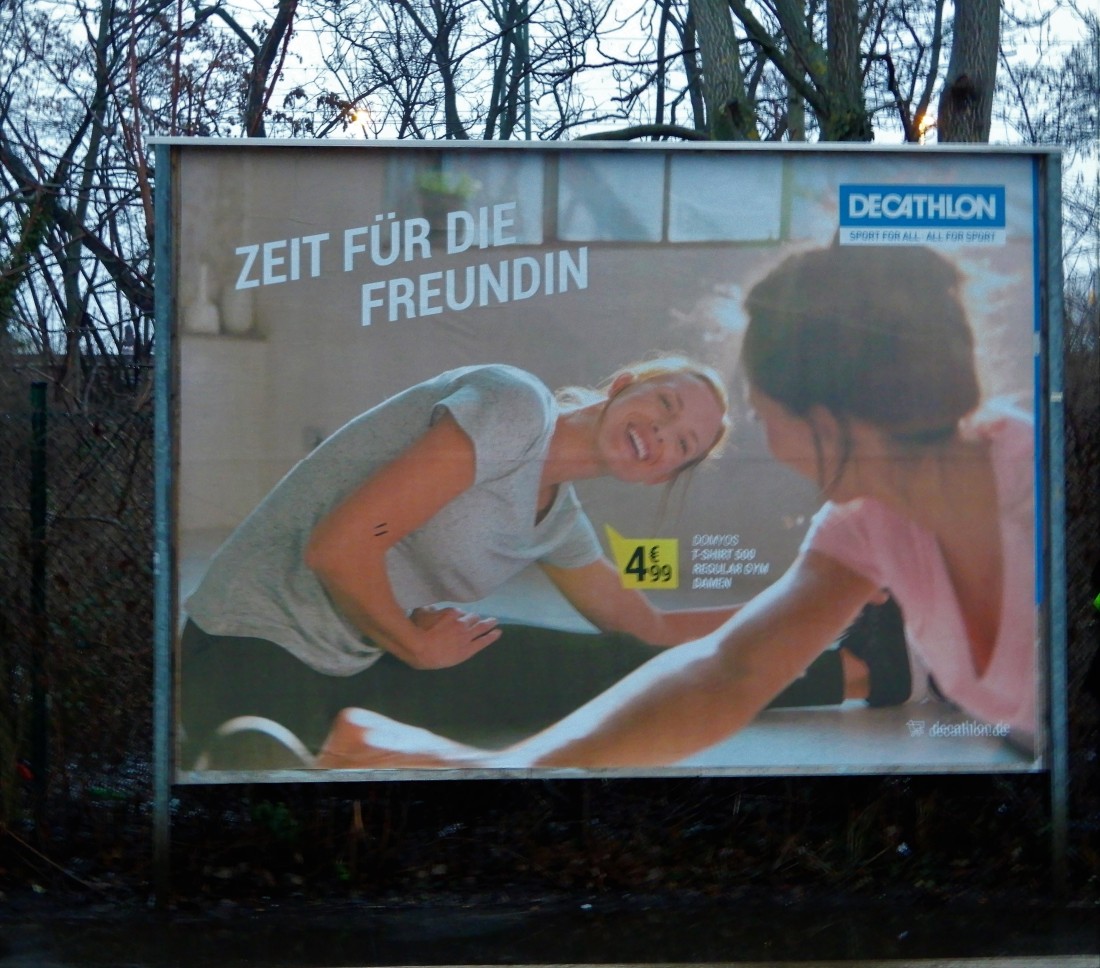 “Time for the girlfriend.”
“Time for the girlfriend.”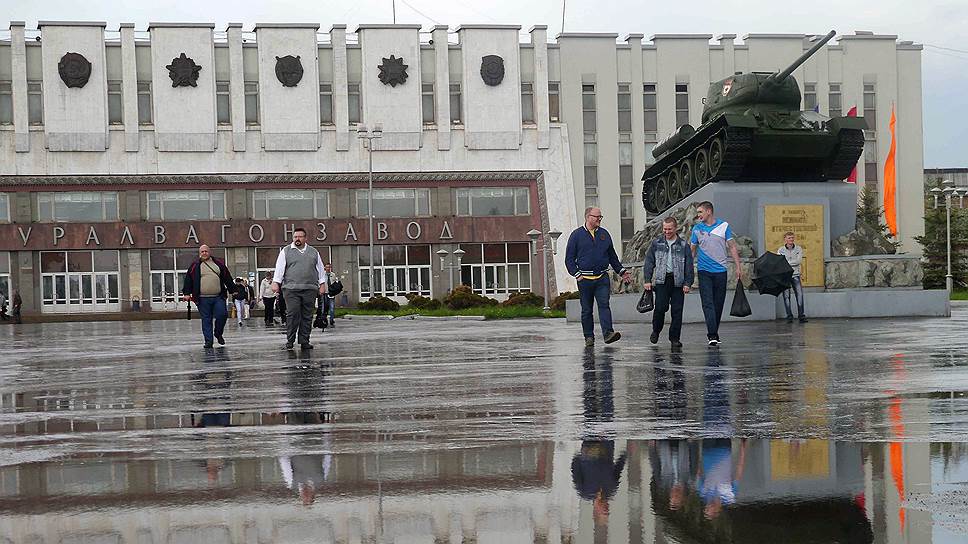 Front entrance of the famous Uralvagonzavod Factory in Nizhny Tagil. Courtesy of Vasily Shaposhnikov and
Front entrance of the famous Uralvagonzavod Factory in Nizhny Tagil. Courtesy of Vasily Shaposhnikov and 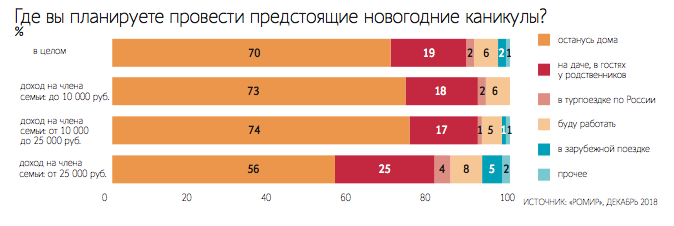
 Central Asian migrant workers queuing outside the Russian Interior Ministry’s work permit application center on Red Textile Worker Street in St. Petersburg. Photo by the Russian Reader
Central Asian migrant workers queuing outside the Russian Interior Ministry’s work permit application center on Red Textile Worker Street in St. Petersburg. Photo by the Russian Reader Filling out the forms for extending a work permit. Photo courtesy of Fmskam.ru and Fergana News
Filling out the forms for extending a work permit. Photo courtesy of Fmskam.ru and Fergana News Immigration center in Moscow. Photo courtesy of Mos.ru and Fergana News
Immigration center in Moscow. Photo courtesy of Mos.ru and Fergana News Migrant workers from Kyrgyzstan. Photo courtesy of Kloop.kg and Fergana News
Migrant workers from Kyrgyzstan. Photo courtesy of Kloop.kg and Fergana News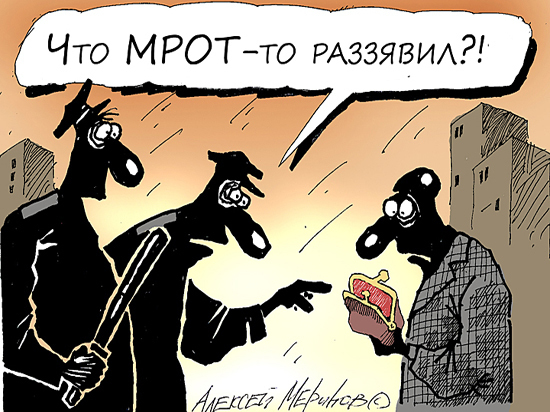 “Why did you open up your MROT?”
“Why did you open up your MROT?”